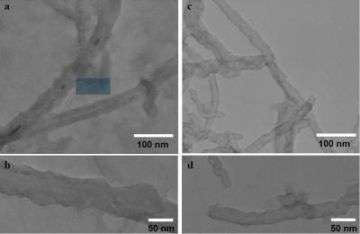Using carbon nanotubes to seek and destroy anthrax toxin and other harmful proteins

Researchers at Rensselaer Polytechnic Institute have developed a new way to seek out specific proteins, including dangerous proteins such as anthrax toxin, and render them harmless using nothing but light. The technique lends itself to the creation of new antibacterial and antimicrobial films to help curb the spread of germs, and also holds promise for new methods of seeking out and killing tumors in the human body.
Scientists have long been interested in wrapping proteins around carbon nanotubes, and the process is used for various applications in imaging, biosensing, and cellular delivery. But this new study at Rensselaer is the first to remotely control the activity of these conjugated nanotubes. Details of the project are outlined in the article “Nanotube-Assisted Protein Deactivation” in the December issue of Nature Nanotechnology.
A team of Rensselaer researchers led by Ravi S. Kane, professor of chemical and biological engineering, has worked for nearly a year to develop a means to remotely deactivate protein-wrapped carbon nanotubes by exposing them to invisible and near-infrared light. The group demonstrated this method by successfully deactivating anthrax toxin and other proteins.
“By attaching peptides to carbon nanotubes, we gave them the ability to selectively recognize a protein of interest – in this case anthrax toxin – from a mixture of different proteins,” Kane said. “Then, by exposing the mixture to light, we could selectively deactivate this protein without disturbing the other proteins in the mixture.”
By conjugating carbon nanotubes with different peptides, this process can be easily tailored to work on other harmful proteins, Kane said. Also, employing different wavelengths of light that can pass harmlessly through the human body, the remote control process will also be able to target and deactivate specific proteins or toxins in the human body. Shining light on the conjugated carbon nanotubes creates free radicals, called reactive oxygen species. It was the presence of radicals, Kane said, that deactivated the proteins.
Kane’s new method for selective nanotube-assisted protein deactivation could be used in defense, homeland security, and laboratory settings to destroy harmful toxins and pathogens. The method could also offer a new method for the targeted destruction of tumor cells. By conjugating carbon nanotubes with peptides engineered to seek out specific cancer cells, and then releasing those nanotubes into a patient, doctors may be able to use this remote protein deactivation technology as a powerful tool to prevent the spread of cancer.
Kane’s team also developed a thin, clear film made of carbon nanotubes that employs this technology. This self-cleaning film may be fashioned into a coating that – at the flip of a light switch – could help prevent the spread of harmful bacteria, toxins, and microbes.
“The ability of these coatings to generate reactive oxygen species upon exposure to light might allow these coatings to kill any bacteria that have attached to them,” Kane said. “You could use these transparent coatings on countertops, doorknobs, in hospitals or airplanes – essentially any surface, inside or outside, that might be exposed to harmful contaminants.”
Kane said he and his team will continue to hone this new technology and further explore its potential applications.
Source: Rensselaer Polytechnic Institute





















